- Four communities in Mexico’s state of Durango, located within the ‘Golden Triangle’, an area known for the presence of the Sinaloa Cartel and opium and marijuana production, embarked on a sustainable forestry project to reduce dependence on illegal crop production.
- The project has helped lift the Tamazula municipality, where the four communities are located, off the state’s poverty list, raise their income above the minimum wage and contain narcotrafficking, according to UCDFI Topia.
- The mountainous region of temperate forests, diverse species of conifers and deep-cut ravines has a long legacy of sustainable forest management, which the communities hope to revive to relieve stigmatization.
- However, the communities are very isolated and surrounded by long dirt roads, meaning journeys to sell their wood are often arduous and costly.
Two decades ago, the inhabitants of four communities in the northern Mexican state of Durango put together a proposal: to make sustainable forest management a means of living. Over the years, they observed that this path has enabled them to look after their forest, brought economic advantages to their region, and above all, closed the door on illegal crop production.
The four communities are situated in a region known as the Golden Triangle, one of the country’s main marijuana and opium-producing regions. But the people living there no longer want to be known across the country for drug production. Now, they want the ‘Golden Triangle’ to be known as an area where what grows, is cared for and sustains their communities, are trees.
The four communities – Ejido Todos Santos y Anexos, Ejido Osos Bravos y Anexos, Las Milpas y Anexos and Santa Ana – are all located in the Tamazula Municipality in Durango, not far from the state borders with Sinaloa and Chihuahua in northern Mexico. Together, they came to the decision to embrace forest management.
“We live in a stigmatized area. They call it the Golden Triangle, but here, our strengths lie in forestry,” says Fortino Escárcega Villa, commissioner of the Ejido Todos Santos y Anexos.
Since the seventies, there have been community organizations in Mexico that have pioneered forest management. Following their example, these four communities decided to create a civil association called Silvicultores del Norte de Tamazula (The Foresters of Northern Tamazula). They began to use their temperate forests, dominated by different species of conifers, in a sustainable way.
A landscape dominated by trees
Northern Durango has a long history of community and sustainable forest management, but this wasn’t what the region was known for across the country. The presence of the Sinaloa Cartel made it infamous, as did the prolific production of opium and marijuana.
This region is situated in the Sierra Madre Occidental and covers parts of three states: Chihuahua, Sinaloa and Durango. This is known as the Golden Triangle.
For many of the people living in these regions, it felt uncomfortable being only known for drug trafficking.
“We felt harassed by organizations and the government who kept referring to us as the Golden Triangle – they’re exaggerating,” says Escárcega Villa. “The most infamous narcos may well come from here, but as you know, the whole republic is a Golden Triangle.”
The greatest resource in the Durango region is actually its water. In fact, the region belongs to the northern Tamazula basin, with a total land surface area of 61,308 hectares (151,495 acres), of which 50,331 (124,371 acres) are covered with trees.

Furthermore, a large part of Durango’s forestry production, around two million cubic meters (70 million cubic feet) of wood annually, comes from this region. It is an area that is difficult to access and where for many years, “people dedicated themselves to other activities out of necessity,” according to José Rojas, regional director of the Committee for the Economic Development of Durango (Comité de Desarrollo Económico de Durango – CODEDUR).
More than 80% of north-eastern Durango has coniferous or deciduous trees that offer “the potential for timber exploitation”, according to the 2015 Study of the Northern Tamazula Basin.
Another study by The Food and Agriculture Organization of the United Nations (FAO) highlights Durango as “one of the most important Mexican states with regards forest production and the conservation of natural resources.”
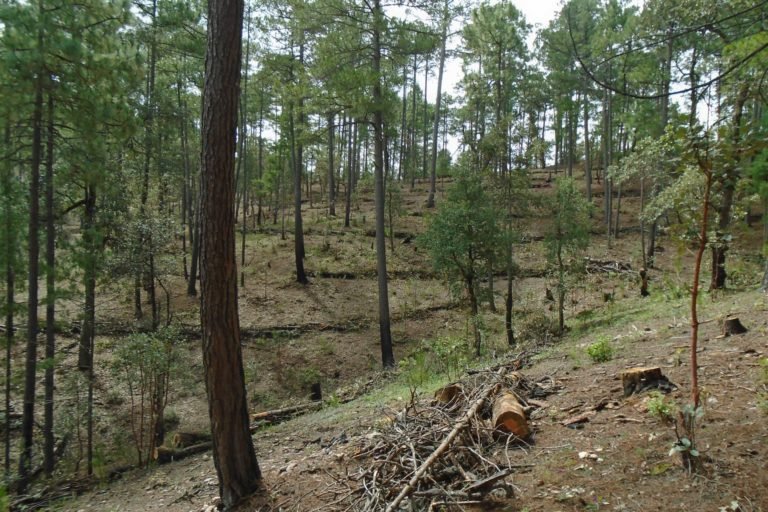
‘Forests give us a sense of certainty’
Twenty years ago, there was a group of advisors working with communities pioneering forest management in Durango who saw potential in the forests of the Tamazula municipality. They later decided to approach the people living in the area and share the environmental, social and economic benefits of sustainable forest management.
One of the forestry engineers, Carlos Zapata Pérez, knows that for many regions, sustainable forest management can be a real economic and social driver.
“When we initially began providing them with technical assistance, we saw the situation [the strong presence of crops destined for drug production] and made a real effort to convince them to move away from growing narcotics,” he said.
“We told them their forest was an important resource because it could offer them many benefits, eco-systemic services, for example.”
Zapata Pérez is the technical director of the Topia Unit for Development and Comprehensive Forest Conservation (UCDFI Topia), one of the community enterprises that emerged from the Emiliano Zapata Union of Ejidos and General Forest Communities (Unión de Ejidos y Comunidades Forestales General Emiliano Zapata – Unecofaez), a pioneering community forest management organization in Mexico.
They have worked in Durango for over 40 years, during which they grew one and a half million trees in nurseries and established a model of community forest management. This has benefitted about 10,500 families.
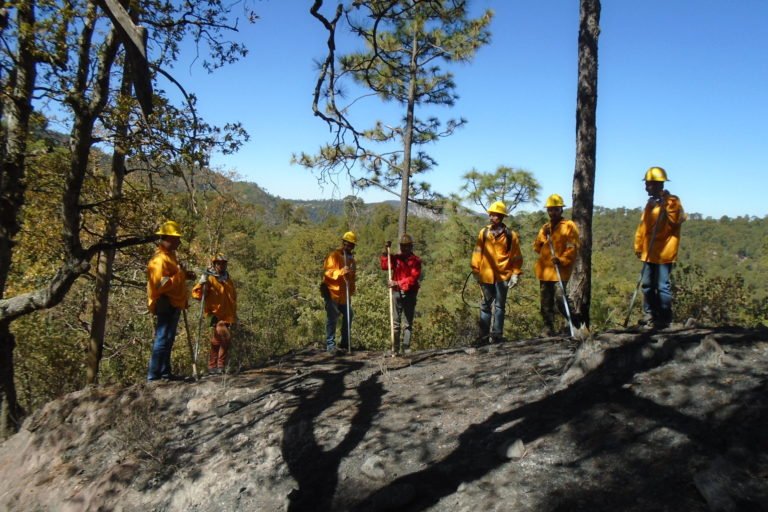
Convincing the four communities in Tamazula that sustainable forest management was the way to go took less than a year. The forest technicians attended community assemblies and presented examples of other ejidos (communal farmland within a village) that demonstrated how they could transition to a model that would allow the communities to conserve their forests while also obtaining economic resources from them.
Chea Soto, one of the forestry engineers from UCDFI Topia was there at the very first ejido assembly back in 2001. The experts proposed to the community the possibility of moving to an efficient, orderly and sustainable forest management system.
“From that first assembly they agreed to work with us,” he remembers. “We then began to structure their forestry work.”
Zapata Pérez highlights that the communities were already on the right path to conserve the forests. All they needed was a little “push” and methodology. The advisors from UCDFI Topia enabled the communities to organize and develop their forest management plans and commercialization of products extracted from the forest.
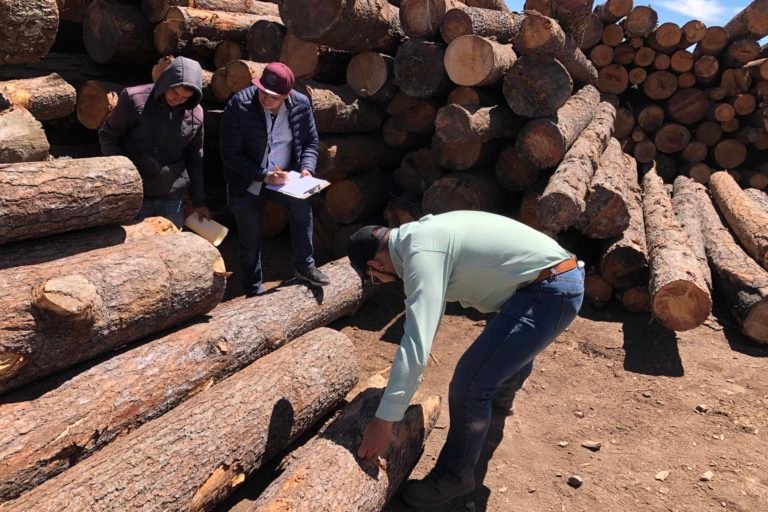
Two decades later, one thousand families from the four communities live off forestry. Moreover, since 2015, they have the certification of Good Forest Management which relates to the official Mexican standard NOM-152-SEMARNAT. Since 2019, they have been certified under the Preventative Technical Audit (Auditoría Técnica Preventiva – ATP) which is awarded by the National Forestry Commission (Comisión Nacional Forestal – Conafor). The latter is a voluntary evaluation that encourages compliance with management programs and the General Law of Sustainable Forest Management.
The area managed by the four communities covers some 180 hectares (444 acres) and produces approximately 35 thousand cubic meters (1.2 million cubic feet) of wood each year.
“It’s the forest that gives us certainty,” summarizes the commissioner of the Ejido Todos Santos y Anexos, Fortino Escárcega Villa, describing the relationship that the four communities have with their forest resources.
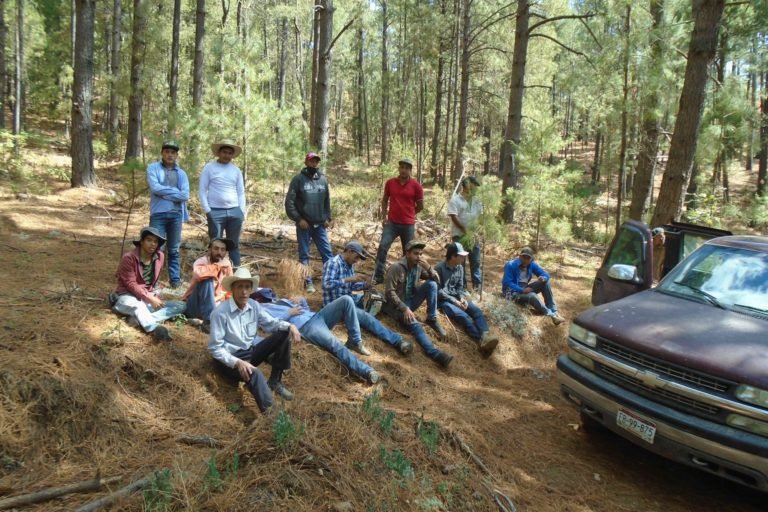
Fighting stigma and isolation
The four communities have strived to overcome two obstacles: the region’s infamy for narcotrafficking and the lack of communication channels.
“We aren’t the Golden Triangle – we are the triangle in need!” says Fortino Escárcega.
He refers to the fact that the four communities are isolated from the big cities where they sell their wood and stock up basic necessities. Members of the community say they need better connectivity.
A drive from Ejido Santa Ana to the city of Durango takes approximately 11 hours, covering 730 kilometers (454 miles).
The mountainous region where the four communities are located is like an island. On one side is a natural border created by the unyielding Humaya River. This river is more than just flowing water; it is a ravine that cuts through the earth down to a depth of 1,000 meters (3,281 feet), forming a physical barrier between the region and the center of the state of Durango.
The other sides surrounding the communities look out onto the states of Sinaloa and Chihuahua. The roads they travel along are no more than dirt tracks, meaning that journeys to sell their wood not only take longer but increase transportation costs, too.

Trailers are the ideal vehicle for transporting their wood. However, even the community with the most accessible highway has to navigate a 15-kilometer (50-feet) stretch along dirt tracks. This makes it impossible for trailers to circulate.
Onésimo Narváez, forestry engineer for UCDFI Topia and technical adviser has spent the last 19 years crossing the region to work with the communities.
“The dirt roads extend for many kilometers. Trailers just can’t get down them. We have had sales [of wood] that have fallen through because of a lack of access; the road is very winding,” he said. “If we were able to get a trailer down here, our transportation costs would be less.”
According to Zapata Pérez, communities are at a disadvantage because of their location. There is no direct connection between the communities, he says. People have to go around via Chihuahua state or the other side via Sinaloa state.
The technical advisers who have been working in the region suggest that this isolation makes it more difficult for communities to shake off the roots of their stigmatization.
“We have developed skills and abilities so that the people who were previously producing drugs are now taking care of the forest. The state of the forest is no longer an issue – it’s very well cared for,” says José Rojas, regional director of CODEDUR and liaison officer for UCDFI Topia.
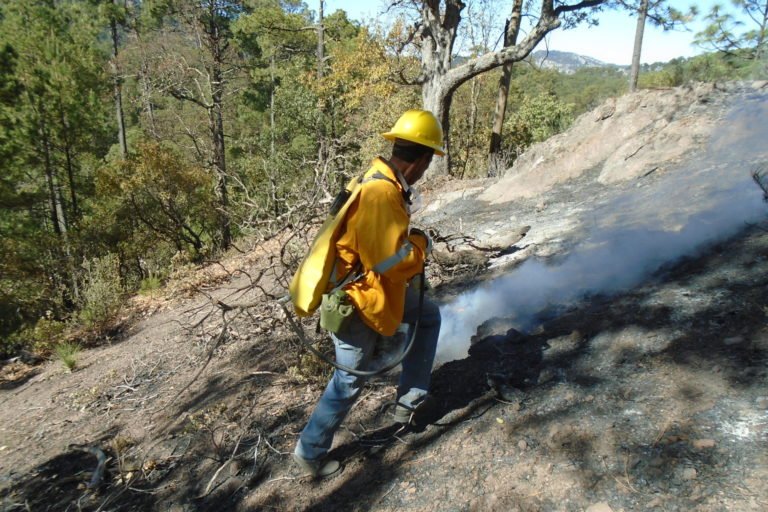
Sheltered by the forest
Rigoberto Ríos Castillo and Rigoberto Escárcega were born in this corner of Durango and have spent their whole lives here. They describe this place as a land that has offered them a quality of life they consider “sufficient”.
The two men speak proudly of the 200 mountainous kilometers (124 miles) of pine trees that extend between their communities and the borders of Mexico’s largest state, Chihuahua, and its enormous ravines that separate them from the center of their own state, Durango.
In this region, the majority of houses do not have drainage and use dry toilets. About 85% of houses have electricity while the other 15% use solar energy systems.
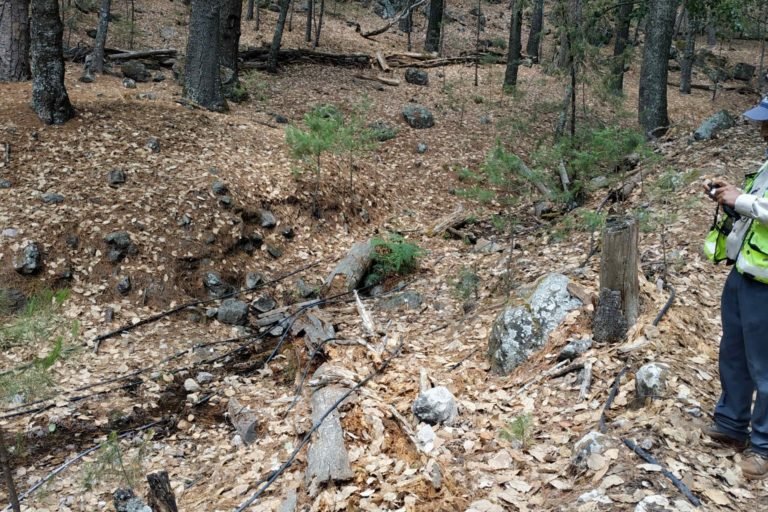
In 2010, the Tamazula municipality was in third place on the Durango state poverty index. Over eighty-three percent of its people were living below the poverty line, according to the National Council for the Evaluation of the Social Development Policy (Consejo Nacional de Evaluación de la Política de Desarrollo Social – CONEVAL). In 2015, Tamazula was able to move off the poverty index list.
Ríos confirms that there is no shortage of food or basic education in their area. Though, access to healthcare is an ongoing topic of discussion. There is a hospital in Tamazula but it only offers the most basic services. In an emergency, the people have to use air taxis to reach cities like Badiraguato, Parral or Durango.
“We still need further development, but at least the people have food to eat,” says Ríos, ex-mayor of Tamazula and ex-commissioner of the Ejidal de Todos los Santos y Anexos.
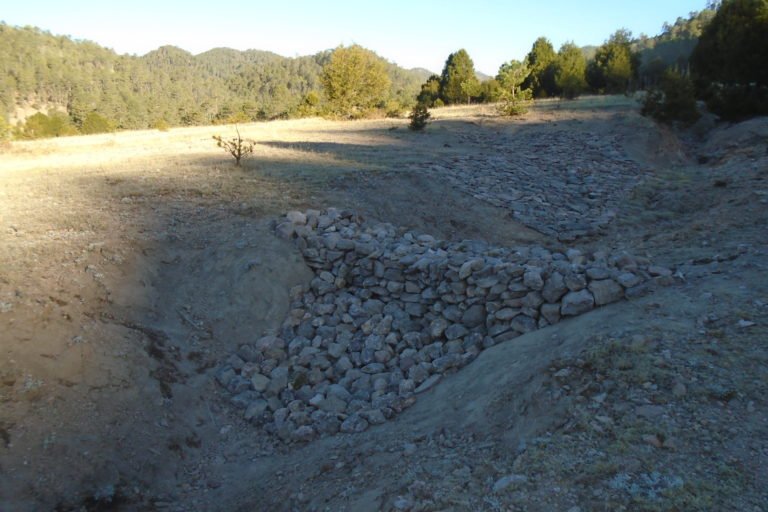
Fortino Escárcega, the current ejido commissioner, emphasizes that the income received from using the forest means their wages lie above the minimum wage of 172 pesos (a little over U.S. $8).
The team of advisors from UCDFI Topia highlights that by participating in sustainable forest management, the four communities have managed to contain the production of illegal crops in the region.
“If the benefits (of wood) were to drop, that is when the production of illicit crops would start to increase again,” explains Onésimo Narváez.
“Thanks to our work in the forest, we have diversified the sources of family income, reducing that of drugs,” says José Rojas.
“We have also prevented people from emigrating from these agrarian centers to the cities,” he adds. “Thanks to the forest, these people have roots in their communities, and they have a secure and sufficient family income with which we can break down inequality.”
José Rojas believes that in these four communities the knowledge that was sewn is now bearing fruit. It is a knowledge more valuable than illegal drug production: “The people have learnt how the forest works.”
Banner Image: View of an area in northern Durango which is under forest management. Photo: Courtesy of UCDFI Topia, S.C.
Related listening from Mongabay’s podcast: We look at the major forest and conservation trends coming out of 2021 and 2022 with Mongabay founder and CEO Rhett Butler, and IUCN senior program officer, Swati Hingorani. Listen here:
FEEDBACK: Use this form to send a message to the author of this post. If you want to post a public comment, you can do that at the bottom of the page.












